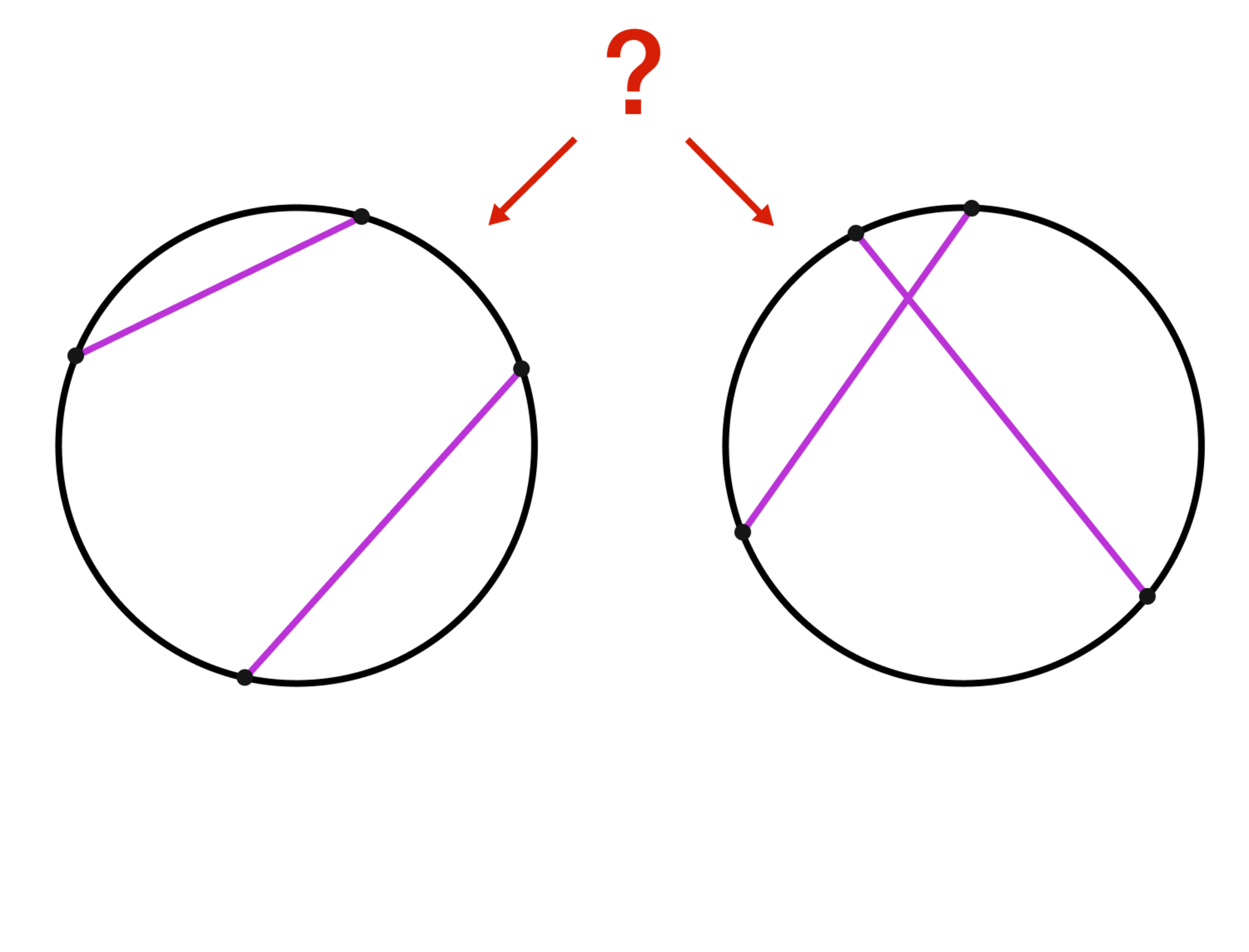Probably intersecting
Two points on a circle are chosen at random, then a chord is drawn between them. Another chord is drawn in the same fashion. What is the probability that both chords will intersect?

This section requires Javascript.
You are seeing this because something didn't load right. We suggest you, (a) try
refreshing the page, (b) enabling javascript if it is disabled on your browser and,
finally, (c)
loading the
non-javascript version of this page
. We're sorry about the hassle.
2 solutions
Without loss of generality, we fix the first point and parametrize the choice of the second point by a variable 0 < x < 1 , its position (as fraction of a full turn) relative to the first point. Let p ( x ) be the probability of then choosing the second chord so that it intersects the first. The overall probability of intersection P will then be the average of p ( x ) over x , or
P = ∫ 0 1 p ( x ) d x .
Now let's find p ( x ) . The first chord splits the circle into two arcs, of relative lengths x and 1 − x , respectively. An intersecting chord can come about by first choosing a point on the first arc, then another on the other arc (probability x ( 1 − x ) ), or vice versa (factor 2).* Therefore
p ( x ) = 2 x ( 1 − x ) .
We then find
P = ∫ 0 1 2 x ( 1 − x ) d x = 2 ( ∫ 0 1 x d x − ∫ 0 1 x 2 d x ) = 2 ( 2 1 − 3 1 ) = 3 1 .
*If you are not convinced by the factor of 2, you can also find p ( x ) by subtracting from 1 the probabilities of choosing both points on the same side:
p ( x ) = 1 − x 2 − ( 1 − x ) 2 .
We can select 4 random points on the circle. Let the points be A,B,C and D in order. There are 3 ways to join them{(AB,CD) , (AD,BC) , (AC,BD)}. In only 1 case(AC,BD), the 2 lines intersect. So the probability is 1/3.